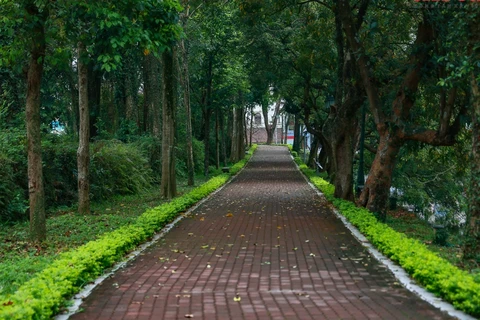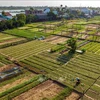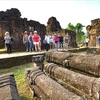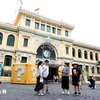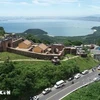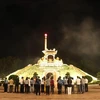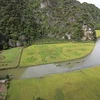The Son Tay-Xu Doai Tourism Year and the Son Tay ancient fortress pedestrian zone will be launched in Hanoi on April 30.
The move aims to tap into the potential to build tourism with respect to the cultural heritage in the area, thereby contributing to socio-economic development.
The Son Tay-Xu Doai Tourism Year will look to capitalize on cultural tourism potential in combination with resort and adventure tourism sites in the area and neighboring localities such as Duong Lam ancient village, Va shrine, Mia pagoda and Dong Mo Lake.
One of the local features is the Son Tay fortress, which was a military base built in 1822 in the reign of King Minh Mang to protect Thang Long Imperial Citadel.
The 820-metre-long walk stretches over Son Tay town's Pho Duc Chinh and Phan Chu Trinh streets, the outer road of Son Tay ancient fortress, the flower garden in the town's centre, the central flower garden area square, the front yard of the town's cultural centre, and the town's stadium square.
The area is scheduled to open to the public on weekends, with contemporary art performances, street music and folk dances.
Visitors will also have a chance to experience unique culinary flavour, buy souvenirs and typical products of Son Tay at the pedestrian zone.
Son Tay is one of the five satellite towns of Hanoi with the main functions of cultural, historical, ecological tourism, commercial services on the basis of preserving traditional cultural heritage.
Currently there are three pedestrian zones in Hanoi, namely Hoan Kiem Lake, Hanoi’s Old Quarter and Trinh Cong Son street.
Duong Lam has become a favorite suburban destination to many tourists in recent years. (Photo: Mai Mai/Vietnamplus)
Experience-rich weekend rendezvous
As of April 30, 2022, Hanoi has 4 pedestrian streets, including: Hoan Kiem Lake pedestrian street (Hoan Kiem district), walking space in Hanoi's old quarter, Trinh Cong Son street (Tay Ho district), and the walk around the moat of Son Tay Ancient Citadel (Son Tay town).
Among them, Son Tay pedestrian street has its own special meaning, surrounded by a national architectural monument of the Citadel, located on hundred-year-old streets such as Nguyen Thai Hoc street, Phan Chu Trinh street, a part of Le Loi and Pho Duc Chinh streets.
Nguyen Dang Thao, Head of the Management Board of Duong Lam Ancient Village said that the pedestrian streets will feature various activities such as cultural performances, boat racing, fishing, water puppetry, stilts, and folk games. Also featured will be contemporary art performances, street music, folk dance, international dance, portraiture, sketching, calligraphy, wrestling tournaments, Chinese chess; exhibitions of paintings, photos, and ornamental creations. There will also be an introduction of books, newspapers, magazines and activities for children, and cultural exchange activities in Xu Doai and other regions.
There are many other services such as street food, One Commune – One Product (OCOP) products, specialties of Xu Doai - Son Tay and localities, especially the mobile house service.
Son Tay has now implemented sustainable urban development in association with tourism development. This plan focuses on building many sightseeing tours at famous monuments and has attracted a large number of tourists. Particularly, Son Tay Citadel area welcomes about 5,000-7,000 visitors each year.
Despite having loads of tourism potential, in fact, Son Tay only attracts day-time visitors, but very few overnight guests due to poor entertainment venues and night activities. As such, there is plenty of room for the development of nighttime tourism in the area/.

